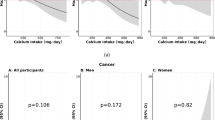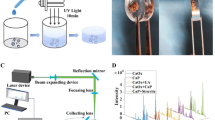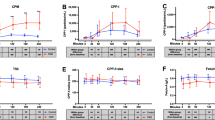Abstract
Summary: Twenty-six low birthweight infants with no differences in the neonatal status were allocated into three groups. Group A (10 infants), Group B (8 infants), and C (8 infants) received formulae with 2.4, 1.6, and 4.1 Calcium/Phosphate (Ca/Pi) ratio respectively. Formula C was supplemented with calcium lactate 800 mg/ kg/day, which yielded 12.7 ± 0.4 mg of Ca and 0.04 ± 0.002 mg of Mg per each 100 mg of salt (mean ± S.D.). The osmolality of the C formula before its administration was 361 ± 52 mOsm/kg. Balances (mean ± S.D.) from the first feeding up to a period of 3 days were obtained. The intestinal product before any feeding contained: Ca, 1.3 ± 0.6 mg/kg; Mg, 2.9 ± 1.5 mg/kg, and Pi, 1.5 ± 2.3 mg/kg. Calcium intake (mg/kg/day) was 89.7 ± 13.8 for formula A, 71.1 ± 12.5 for formula B, and 156.8 ± 19.8 for formula C. Their net retention (mg/kg/day) was 50.8 ± 15.9, 39.3 ± 12.8 (P < 0.05), and 105.2 ± 21.9 (p < 0.001) respectively.
Net retention of Pi was comparable in the three groups (A, B and C) ranging 24.7–25.7 mg/kg/day. Small variations in intake are finely compensated by parallel urinary excretion (range 6.3–12.8 mg/kg/day).
Magnesium absorption did not show differences among the three formulae. The evolution of plasmatic values for magnesium was fairly normal in the three groups. Phosphatemia was significantly (P < 0.01) lower in group A (lowest Pi containing formula) on the 3rd day. Patients on formula B (smaller Ca content) showed a mean blood calcium of 7.9 mg/dl, which was significantly lower than in the other groups. In two instances, blood calcium was lower than 6.9 mg/dl (Z = 6.32; P < 0.05). Net retention of calcium correlates positively with Ca/Pi ratio (r = 0.82) and with absolute Ca intake (r = 0.84). Calcium lactate supplementation did not modify acid base equilibrium, lactatemia nor digestive tolerance.
Speculation: To prevent demineralization in the early postnatal period of preterm babies, the net retention of calcium could be improved more effectively by adding a calcium supplement to the formula rather than by decreasing its Pi content, even though both procedures lead to a comparable Ca/Pi quotient.
Similar content being viewed by others
Log in or create a free account to read this content
Gain free access to this article, as well as selected content from this journal and more on nature.com
or
Author information
Authors and Affiliations
Rights and permissions
About this article
Cite this article
Moya, M., Domenéch, E. Role of Calcium-Phosphate Ratio of Milk Formulae on Calcium Balance in Low Birth Weight Infants during the First Three Days of Life. Pediatr Res 16, 675–681 (1982). https://doi.org/10.1203/00006450-198208000-00019
Issue date:
DOI: https://doi.org/10.1203/00006450-198208000-00019
This article is cited by
-
Fatty acid absorption in preterms on formulas with and without long-chain polyunsaturated fatty acids and in terms on formulas without these added
European Journal of Clinical Nutrition (2001)



